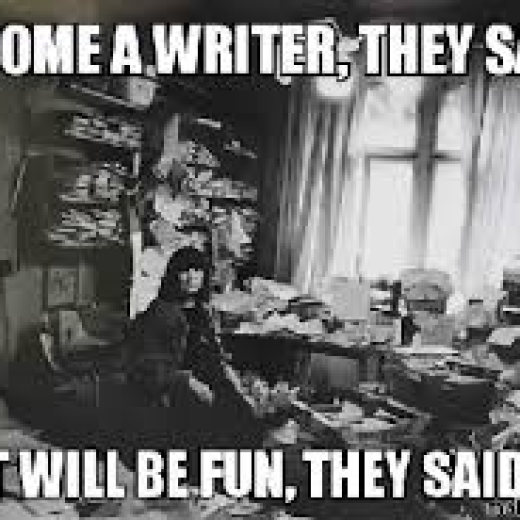The Opposites Problem-Solving Technique by Margaret A. Nystrom
 Welcome back educator, writer, and artist Margaret Aslanis-Nystrom as she shares with us the opposites problem-solving technique. Enjoy!
Welcome back educator, writer, and artist Margaret Aslanis-Nystrom as she shares with us the opposites problem-solving technique. Enjoy!
***
Stuck with your writing? Don’t know what to do next? Out of creative options?
Often our writing is off balance because we concentrate on just one side of a perspective. We get stuck because we forget there is another way to look at things. One easy and fun way to deal with this problem is what I call my, ‘Opposites Problem-Solving Technique’.
How does it work?
Here are two examples:
Example 1:
Let’s say you are having difficulty thinking of traits for your antagonist. First, write down the characteristics of your protagonist into a simple T-chart. If you don’t have your traits for the protagonist yet, that’s OK. Just write down what you think you might use, or just make it up. Nothing is set in stone. Remember, this is an exercise to help you find ideas and problem-solve.
Let’s say your protagonist is a female teen, who lives in Florida, likes the color purple, is artistic and musical, loves animals, and is well-liked by her peers. Next to your female protagonist, you are going to make an ‘opposite’ chart of traits to create your antagonist. Think in terms of opposites. Whatever the protagonist is, you will think in opposite terms to create traits for your antagonist. There are no right or wrong answers. Just ask yourself, “What is the most creative way to describe this detail or idea in opposite terms?”
Protagonist Chart Antagonist or ‘Opposite’ Chart
Floridian New Yorker
purple lover hates purple
talented artist and musician closet mathematician
animal lover avid hunter
popular loner
Here’s another example you can use to play with to come up with new ideas or problem-solve.
Example 2:
You want a new scene, or plot, or twist, because your plot is becoming too predictable. Let’s shake it up a bit. You want to keep your readers guessing and at the edge of their seat. Perhaps, your current plot is boy meets girl, boy loves girl, boy loses girl, boy gets girl back. Now, use the ‘opposite’ technique. We will go to the end of what we already have and work backwards. Boy gets girl back, boy loses girl again, boy hates girl, and girl meets another boy. Fun and easy huh? Or, you can make it even more simple by changing one word, the word girl. Now it becomes: boy meets boy, boy loves boy, boy loses boy, boy gets boy back.
Using my ‘Opposite Problem-Solving Technique’ not only helps create new ideas and helps you get unstuck or problem-solve, but it also helps balance your work by providing another side to your work. Artists do this all the time with colors. They will use a color wheel when they want to use a color and its opposite (or complimentary color) as a tool to provide balance and interest in the piece they are working on.
Like choosing blue, and then its opposite (or complimentary color), which is yellow or orange. My technique is like a writer’s wheel of colors. You compliment the traits or ideas you are using with its direct opposite. Remember you are in control, and there are no wrong or right answers. Use my fun technique to see what works for you.
***
 Margaret A. Nystrom, M.A.T., Q.M.H.P.
Margaret A. Nystrom, M.A.T., Q.M.H.P.
Feeling stuck or need help with procrastination or writer’s block? Margaret’s award-winning blog, http://afterwriterdreams.com, is a motivational content blog for writers. She is an author, educator, artist, guest radio speaker, and monthly guest blogger/columnist in N.C. She has taught children and adults for 40 years and created over 25 blogs. She also writes articles and psychological thrillers. Read her new ebook: The Writer’s Control Guide for Procrastination and Writer’s Block: 101 Management Strategies.






